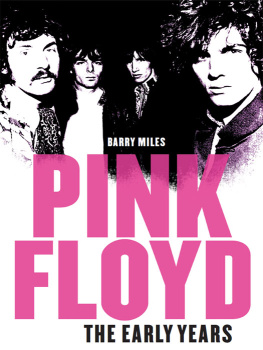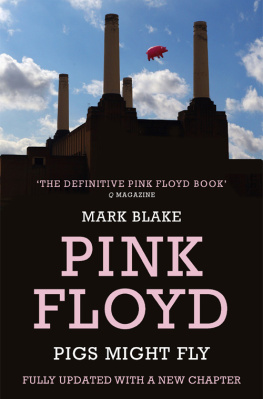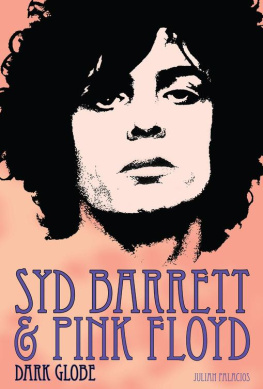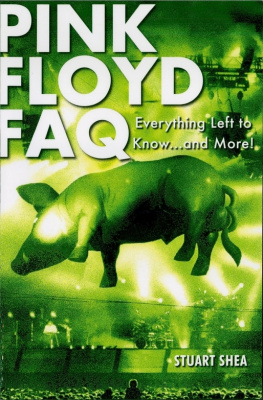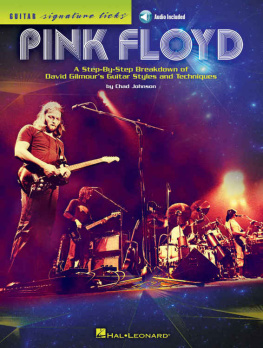Andy Mabbett - Pink Floyd: The Music and the Mystery
Here you can read online Andy Mabbett - Pink Floyd: The Music and the Mystery full text of the book (entire story) in english for free. Download pdf and epub, get meaning, cover and reviews about this ebook. year: 2010, publisher: Omnibus Press, genre: Non-fiction. Description of the work, (preface) as well as reviews are available. Best literature library LitArk.com created for fans of good reading and offers a wide selection of genres:
Romance novel
Science fiction
Adventure
Detective
Science
History
Home and family
Prose
Art
Politics
Computer
Non-fiction
Religion
Business
Children
Humor
Choose a favorite category and find really read worthwhile books. Enjoy immersion in the world of imagination, feel the emotions of the characters or learn something new for yourself, make an fascinating discovery.

- Book:Pink Floyd: The Music and the Mystery
- Author:
- Publisher:Omnibus Press
- Genre:
- Year:2010
- Rating:5 / 5
- Favourites:Add to favourites
- Your mark:
- 100
- 1
- 2
- 3
- 4
- 5
Pink Floyd: The Music and the Mystery: summary, description and annotation
We offer to read an annotation, description, summary or preface (depends on what the author of the book "Pink Floyd: The Music and the Mystery" wrote himself). If you haven't found the necessary information about the book — write in the comments, we will try to find it.
Pink Floyd: The Music and the Mystery — read online for free the complete book (whole text) full work
Below is the text of the book, divided by pages. System saving the place of the last page read, allows you to conveniently read the book "Pink Floyd: The Music and the Mystery" online for free, without having to search again every time where you left off. Put a bookmark, and you can go to the page where you finished reading at any time.
Font size:
Interval:
Bookmark:
THE GROUP RECORDINGS
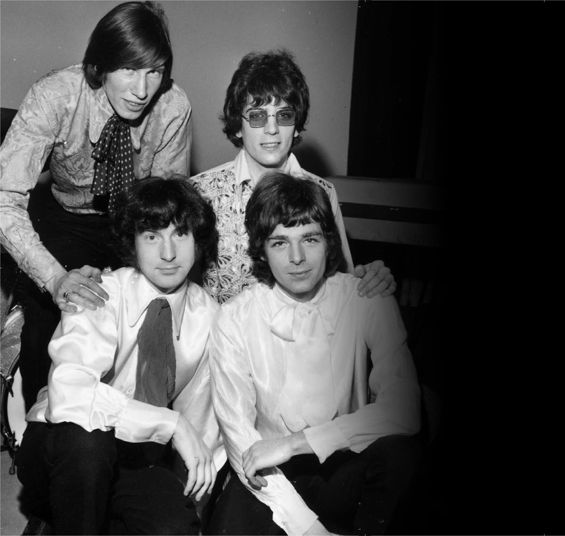

THE FIRST DEMO

(Unreleased)
The earliest known Pink Floyd recording session, at a studio in London, took place around Christmas 1964, while jazz guitarist Bob Rado Klose was still with the band. The tracks were three Syd Barrett songs: Lucy Leave (which was performed at some of the bands 1966 concerts); Double O Bo (described by Nick Mason as Bo Diddley meets the 007 theme) and Butterfly, plus a cover of the blues standard Im A King Bee. A limited number were pressed as vinyl acetates, to be given to potential concert venues as evidence of the bands capabilities. Lucy Leave and Im a King Bee have been bootlegged, and fans eagerly await the appearance of these tracks on a formal release.
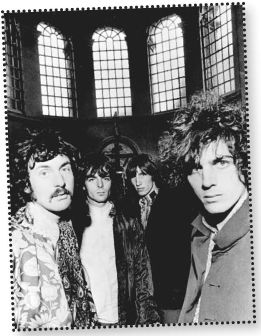
A snatch of Im A King Bee is heard in the background of The Pink Floyd And Syd Barrett Story documentary, with much better quality than the bootlegged version.
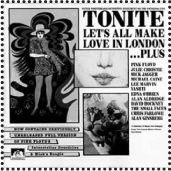
TONITE LETS ALL MAKE LOVE IN LONDON

Originally released circa 1968 as Instant INLP 002 CD: See For Miles SEE CD 258
Pink Floyds first recording session intended for commercial release was on 11 and 12 January 1967, in Sound Techniques Studio, London. Syd Barretts then girlfriend persuaded film director Peter Whitehead to fund the sessions, produced by the legendary Joe Boyd, where the band cut two of Barretts songs, Arnold Layne and Lets Roll Another One, and two lengthy instrumental jams, Interstellar Overdrive and Nicks Boogie, the latter pair being much closer to their contemporary live performances. Only very short extracts of Interstellar Overdrive were used in Tonite Lets All Make Love In London, the film for which the tracks had been intended, and on the original soundtrack LP.
Since October 1966, the band members had been part of an equal, six-way partnership,
Blackhill Publishing, with their managers, Peter Jenner and Andrew King. The latter pair took the two short songs from Whiteheads sessions to EMI subsidiary Columbia, who were sufficiently impressed to sign the band and have the songs re-recorded as their first single.
In 1990, See For Miles Records acquired the original master tape of the two instrumentals, covered in green mould. Fortunately, it was wound so tightly that the playing surface of the tape was unaffected and they were able to release an extended soundtrack album, featuring the short clips of Interstellar Overdrive together with the full 16 and 3/4 minute version, plus the previously unreleased Nicks Boogie. The two long pieces were also available on an EP (See For Miles SEA CD4) and a poster-sleeve variant (SFM 2). Both the EP and album include (different) dialogue extracts from the film, and the album also has music by other artists. The original movie, in which Pink Floyd are briefly glimpsed, was also available on video (PFVP 2). On all these releases, Interstellar Overdrive, a group composition, is erroneously credited to Barrett alone, and is a different version from the one released later by EMI. Nicks Boogie is credited as a Pink Floyd composition. All formats are mono.
Pink Floyd London 1966/1967 (Snapper SMADVD049), is a region-0 NTSC DVD with a recut film comprising both these tracks, set to additional footage from the recording session, clips of a Floyd gig at the UFO Club (the headquarters of the psychedelia scene in London, where Pink Floyd were effectively the house band), mixed Sixties scenes and film, not of Pink Floyd, shot at the 14 Hour Technicolour Dream event on April 29, 1967, at which they did appear. It has the original mono soundtrack and an enhanced 5.1 version.
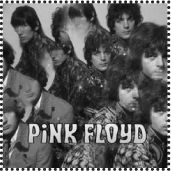
THE PIPER AT THE GATES OF DAWN

Released 5 August 1967 as Columbia SCX 6157
UK Chart: #6;
US Chart: n/a
First CD: CDP 7 46384 2
Remaster: EMI 8 31261 2; 17 October 1994
Mono CD: EMI 859 857 2; 4 August 1997 40th Anniversary set 27 August 2007 as EMI 503919 2 (3CD) and EMI 503923 2 (2CD)
There are those who regard Pink Floyds dbut as their best album. It is so far removed from Dark Side and The Wall that it is hard to believe they were recorded by the same band. Indeed, in many ways, they werent; the manic, erratic, unpredictable and unreliable Syd Barrett was clearly their leader and, unlikely as it may now seem, Richard Wright was the second most dominant force musically. For a record that is every bit as much a product of the swinging Sixties as any of its contemporaries, it is remarkable that Piper hasnt dated anywhere near as much as its vintage would suggest. No doubt the absence of Make Love Not War and drug themes plays a large part in this.
The English whimsy which many attribute to the album is first evident from the title, taken from a chapter in Kenneth Grahames Wind In The Willows, required reading for all Barrett-o-philes.
Barrett, his mental state deteriorating by the day as the pressures of stardom, and no doubt his copious intake of LSD, took their toll, was notoriously difficult to work with, changing tunes and lyrics between and during takes.
The albums producer, Norman Smith, was then best known as the engineer on every Beatles album up to and including Rubber Soul, and it was only his work with Pink Floyd that kept him from working on Sergeant Peppers Lonely Hearts Club Band, which was being pieced together in an adjacent studio at Abbey Road. At one point during the sessions Paul McCartney stopped by to listen, and in a subsequent press interview described the Floyds dbut album as a knockout. Much of the technical jiggery pokery which created the sound on Piper was learned by Smith through his work with The Beatles although, listening to the playout on Bike or the panning on Interstellar Overdrive, its intriguing to think what he would have made of the album had he had access to a modern, digital studio. One quirk of late Sixties recording practices is the simultaneously released mono version (Columbia SC 6157), which is substantially different from the stereo mix we all know and love.
A second Barrett-composed single, See Emily Play, is not on the album, but was added to the Japanese release (Toshiba/ EMI EMS 50104), which also had a lyric sheet. It was also on the original US version, available in mono and stereo (Tower T 5093/ ST 5093 respectively), with a different tracklisting: See Emily Play; Pow R Toc H; Take Up Thy Stethoscope & Walk; Lucifer Sam; Matilda Mother; Scarecrow; The Gnome; Chapter 24; Interstellar Overdrive. Later releases in both countries have reverted to the UK tracklisting.
Font size:
Interval:
Bookmark:
Similar books «Pink Floyd: The Music and the Mystery»
Look at similar books to Pink Floyd: The Music and the Mystery. We have selected literature similar in name and meaning in the hope of providing readers with more options to find new, interesting, not yet read works.
Discussion, reviews of the book Pink Floyd: The Music and the Mystery and just readers' own opinions. Leave your comments, write what you think about the work, its meaning or the main characters. Specify what exactly you liked and what you didn't like, and why you think so.


